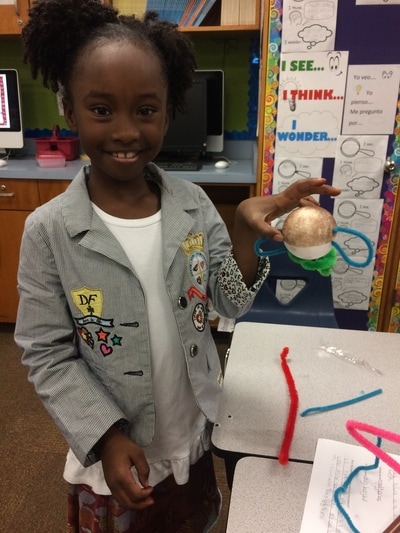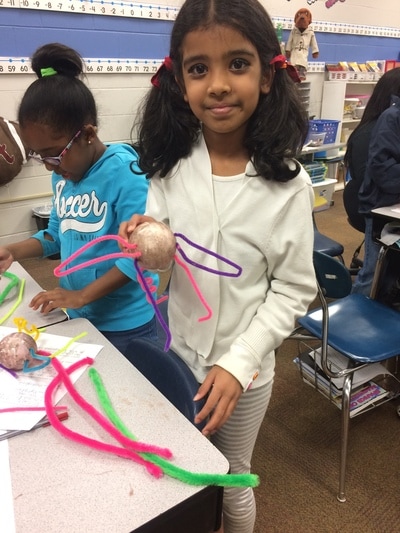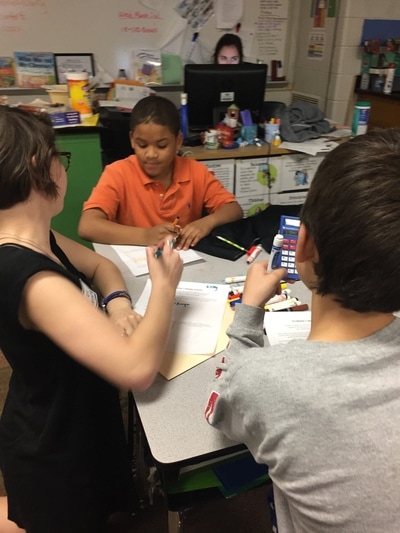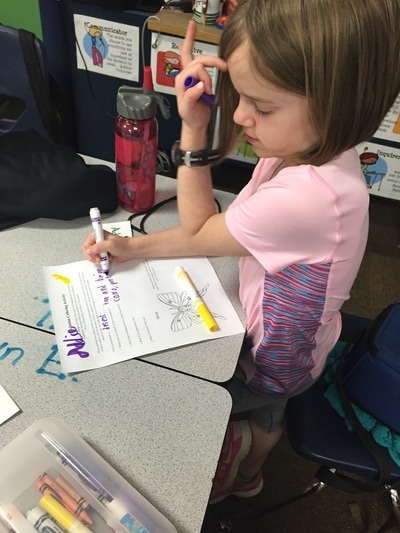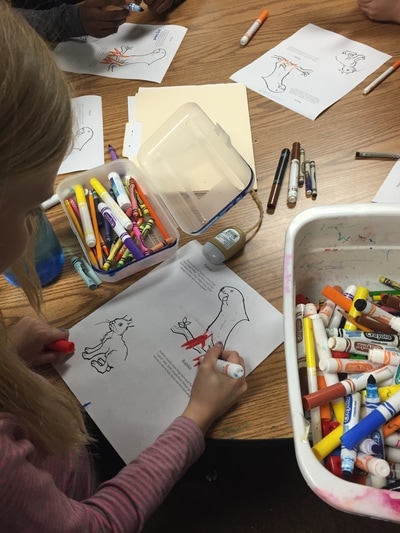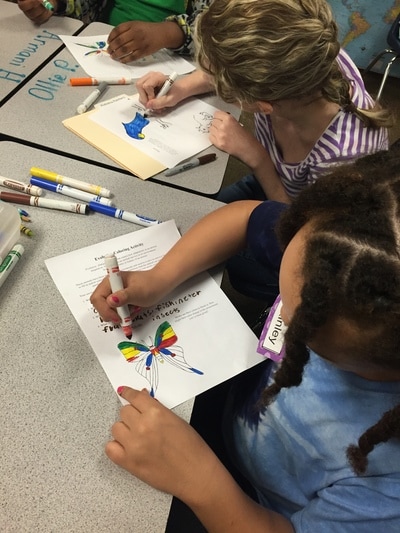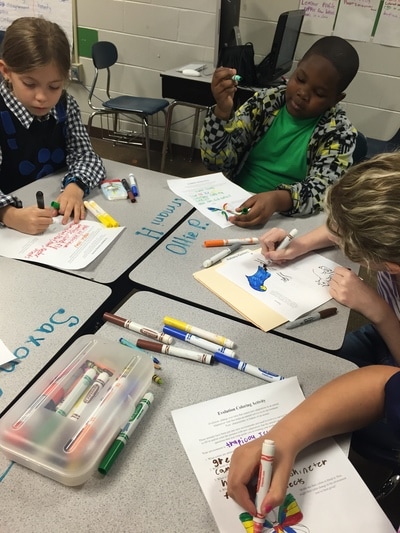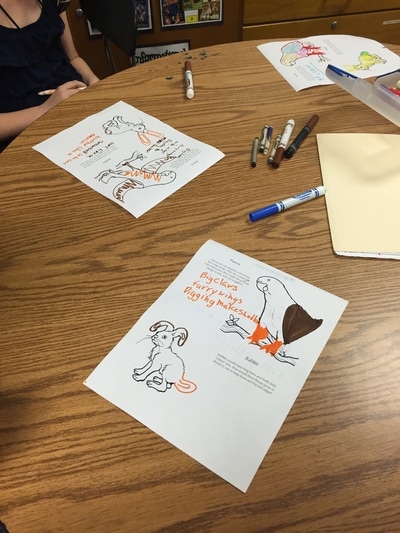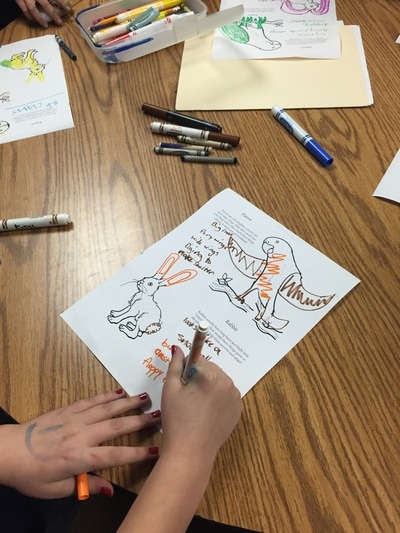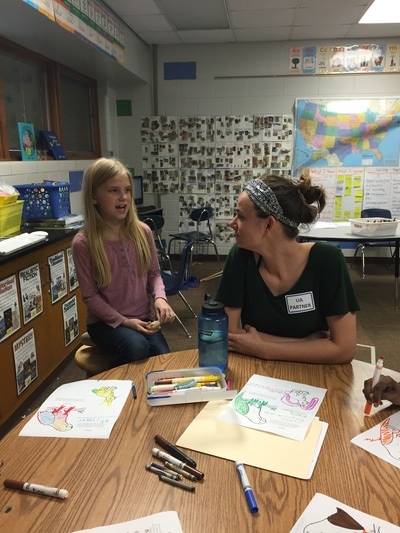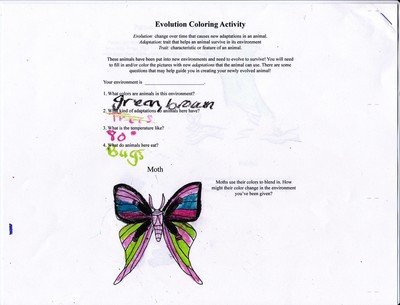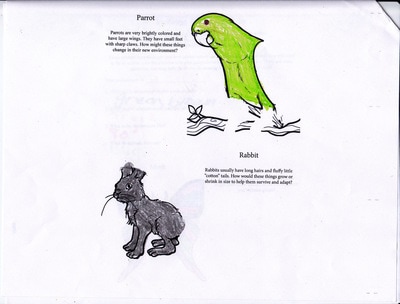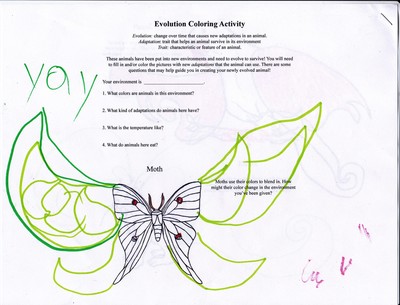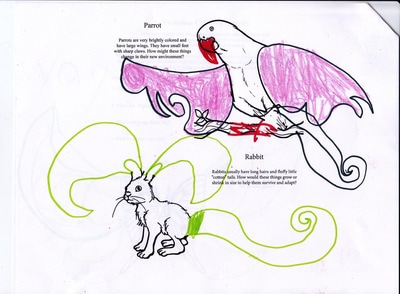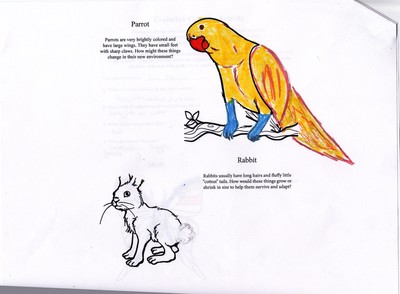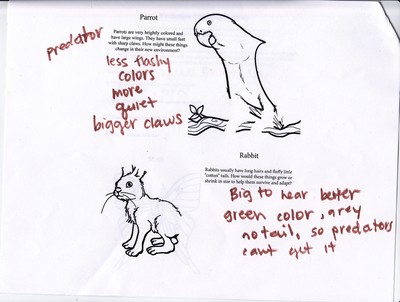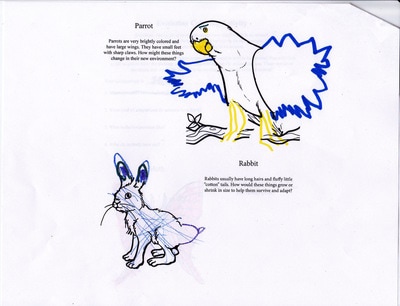Table of Contents
|
What's this lesson all about?
Biological anthropology is concerned with learning human characteristics and how they developed. To understand this, biological anthropologists must understand evolution and how it works. Evolution happens when new species occur in nature. There are four driving factors of change: natural selection, genetic drift, gene flow, and mutation.
In our lesson, we focus on what adaptations are. The students are challenged with figuring out how existing species might change and evolve if they were put into new environments. They are usually very enthusiastic about this activity.
Why Study Evolution?
The more we understand about human adaptations, the more we can learn about what makes us unique and what is an ancestral characteristic. We can learn what our ancestors may have been like, and if human traits are universal or cultural.
Knowledge is power--know our traits can help us prepare for future health problems or environmental changes. For example, we know that a mutation appeared in human history that allowed us to process milk. Some people do not have this gene and are lactose intolerant. If we didn't understand that this process existed, we might not realize that someone is getting sick because they're drinking milk.
In our lesson, we focus on what adaptations are. The students are challenged with figuring out how existing species might change and evolve if they were put into new environments. They are usually very enthusiastic about this activity.
Why Study Evolution?
The more we understand about human adaptations, the more we can learn about what makes us unique and what is an ancestral characteristic. We can learn what our ancestors may have been like, and if human traits are universal or cultural.
Knowledge is power--know our traits can help us prepare for future health problems or environmental changes. For example, we know that a mutation appeared in human history that allowed us to process milk. Some people do not have this gene and are lactose intolerant. If we didn't understand that this process existed, we might not realize that someone is getting sick because they're drinking milk.
|
|
This video was filmed by Hannah Tytus in Fall 2016. That semester, we challenged the students to come up with adaptations for three animals if they were placed in a new environment. You will see one of the Arcadia students describing those adaptations. |
|
To the right is an overview of the lesson on Physical Anthropology and Evolution taught by Kelsey Kennedy. This lesson's outline, powerpoint, and activity supplies is available for download here (V1). |
|
Why Do Anthropologists Study Evolution? Lesson Plan, V1
By Kelsey Kennedy
Arcadia-Overview
Third, Fourth, and Fifth Graders
Seven Sessions
Lesson: Evolution
Materials:
Review:
Focus:
Learning Objectives:
Independent Practice (Activity):
Arcadia-Overview
Third, Fourth, and Fifth Graders
Seven Sessions
Lesson: Evolution
Materials:
- Crayon boxes – washable markers, crayons, pencils
- Evolution worksheets
Review:
- What are different ways we can communicate without speaking?
Focus:
- What is evolution, what are the four forces of evolution? Why do anthropologists study evolution?
Learning Objectives:
- The students will learn about natural selection, mutation, gene flow and genetic drift.
- Natural selection: when traits are more adaptive, they are under pressure from natural selection. If the trait is adaptive, the parents are likely to survive and pass the trait to their offspring. After many generations, this adaptive trait is likely to become permanent and more visible in the population.
- Gene flow: random changes in frequency of traits
- Genetic drift: when a group goes away or comes back into a population and introduces new traits
- Mutation: when DNA replicates improperly and causes new traits to emerge that were not present before.
- Students will learn that animals have traits that are adaptive.
- Adaptation: trait that helps an animal survive in its environment
- Trait: characteristic or feature of an animal.
- Students will learn why anthropologists study evolution
- It lets us learn more about human adaptations
- We can learn where we came from and what our ancestors were like.
Independent Practice (Activity):
- Students will be given a worksheet that has animals with parts of their body missing.
- Each clan will decide what environment they want to use.
- They will then come up with new adaptations for the animals, like fur color, teeth, ears, and wings.
- The goal is for the students to use what they now know about adaptation and selection to come up with adaptive traits.
Why Do Anthropologists Study Evolution? Lesson Plan, V2
by Madeline Anscombe
TMSE-Overview
Third Graders
Eight Sessions
Previous Lesson: Playful Primates
Lesson: Evolution
Materials:
Review:
Focus:
Objectives:
Independent Practice (Activity)
Environment One __________________________
Animal name ___________________________
How has your animal adapted to its environment?
__________________________________________________________________________________________________________________________________________
Environment Two __________________________
Animal name ___________________________
How has your animal adapted to its environment?
__________________________________________________________________________________________________________________________________________
Environment Three __________________________
Animal name ___________________________
How has your animal adapted to its environment?
__________________________________________________________________________________________________________________________________________
Examples of environments:
Environment 1: Cold, wet (lots of snow!), little vegetation
Environment 2: Warm, wet, heavy vegetation
Environment 3: Cold, dry, mountainous terrain
TMSE-Overview
Third Graders
Eight Sessions
Previous Lesson: Playful Primates
Lesson: Evolution
Materials:
- Pipe Cleaner
- Foam Ball
- Paint
- Scissors
Review:
- What is bipedal locomotion?
Focus:
- This history of evolution
- What a scientific theory is
Objectives:
- Students will briefly learnt he history of evolution
- Charles Darwin-the first person to publish their theory of evolution
- The Origin of Species-the book by Charles Darwin about how different animals changed over time in order to fit their environment
- Students will be able to understand a scientific theory
- Scientific theory: the most well proven form of a scientific explanation that must be tested many times and cannot be false in any test.
- Understand what adaptation means, and how this relates to evolution
- Adaptation: a change that happens in reaction to an organism’s environment
- Natural selection: some individuals are better at surviving, their adaptations are carried on for future generations.
- Students will understand that if we go back far enough, all things are related
- The students will come up with adaptations for a new animal in an environment.
Independent Practice (Activity)
- Students are given three environments and challenged to make up new animals that are adapted to those environments.
Environment One __________________________
Animal name ___________________________
How has your animal adapted to its environment?
__________________________________________________________________________________________________________________________________________
Environment Two __________________________
Animal name ___________________________
How has your animal adapted to its environment?
__________________________________________________________________________________________________________________________________________
Environment Three __________________________
Animal name ___________________________
How has your animal adapted to its environment?
__________________________________________________________________________________________________________________________________________
Examples of environments:
Environment 1: Cold, wet (lots of snow!), little vegetation
Environment 2: Warm, wet, heavy vegetation
Environment 3: Cold, dry, mountainous terrain
Downloadable Content
Over the years, we have changed our lessons and activities. Here, we have provided different versions of the Evolution lessons that we've taught. Keep checking back in, as we'll upload more in the future.
|
|
| ||||||||||||||||||
|
|
| ||||||||||||||||||
|
|
| ||||||||||||||||||
For more information, and our own perspective on teaching these lessons on evolution, check out our blog!
- EVOLUTION AT TMSE – ADAPTING ANIMALS BY MADELINE ANSCOMBE
- WEEK 6 @ TMSE – EVOLUTION BY WILL MCCRARY
- EVOLUTION AT TMSE; EVOLUTION – TMSE
- EVOLUTION AT ARCADIA
- Spring 2018: Evolution and Osteology at TMSE
Gallery
Below is a gallery of pictures of students and teachers creating their new species. Sometimes we teach the lesson with worksheets where they color and draw animals, and sometimes we teach the lesson with 3-dimensional crafting supplies.


